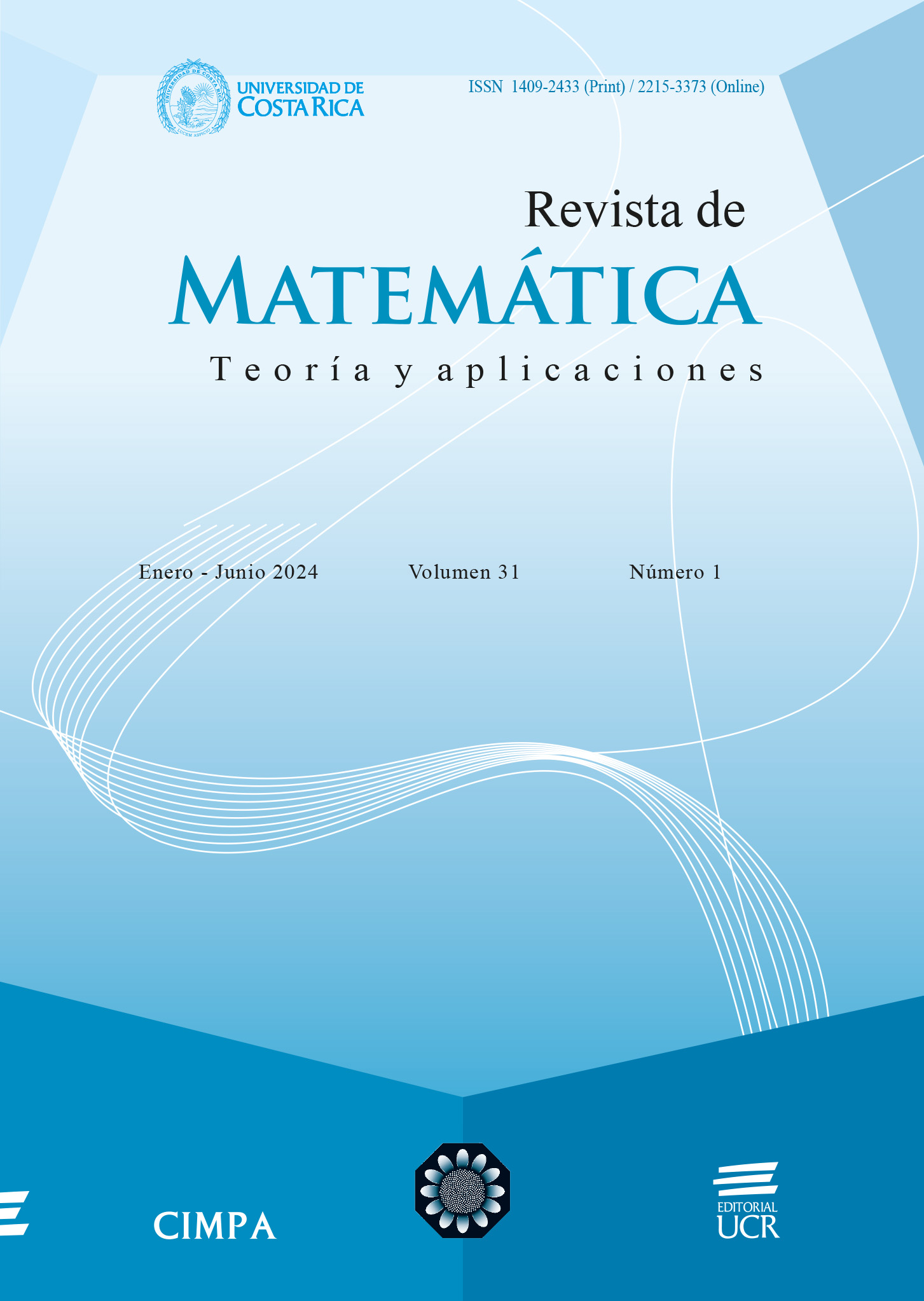Abstract
The use of adapted wavelets for pattern recognition is very attractive because of the multiscalarity of the wavelet transform. However, the good performance of these algorithms in pattern detection strongly depends on the construction of the filters adapted to the pattern of interest. The Discrete Shapelet Transform II [9] (DST-II) is an algorithm inspired by the wavelet transform, which allows the design of tailored filters for pattern detection in one-dimensional signals. The construction of these filters requires the solution of a system of nonlinear equations, which according to [9] can be performed by any iterative method. This research presents a novel and comprehensive numerical study that demonstrates the impact of the choice of the appropriate numerical method for the solution of the nonlinear system in DST-II. The efficiency of the estimated filters has an impact on the performance of this transform in pattern detection. The best results are obtained by combining Newton’s method with preiteration using the continuation algorithm. The convergence achieved for 55,37% of the patterns suggests that DST-II could be suitable for patterns with specific shapes, useful in biomedical signal applications.
References
A. Aldroubi, P. Abry y M. Unser, Construction of biorthogonal wavelets starting from any two multiresolutions. IEEE Transactions on Signal Processing 46(1998), no. 4, 1130-1133. doi: 10.1109/78.668563
D. G. Anderson, Iterative Procedures for Nonlinear Integral Equations. Journal of the ACM 12(1965), no. 4, 547-560. doi: 10.1145/321296.321305
E. G. Birgin, J. L. Gardenghi, D. S. Marcondes y J. M. Martínez, Accelerated derivative-free spectral residual method for nonlinear systems of equations. arXiv. 2021. doi: 10.48550/arXiv.2104.13447
R. L. Burden, J. D. Faires y B. A. M, Soluciones numéricas de sistemas de ecuaciones no lineales. 10a ed. Cengage Learning, Mexico, D.F., 2017.
I. Daubechies, Ten Lectures on Wavelets. Society for Industrial and Applied Mathematics, Philadelphia, Pennsylvania, 1992.
S. Devuyst, The DREAMS Databases and Assessment Algorithm. Zenodo, ene. de 2005. doi: 10.5281/zenodo.2650142
A. Field, J. Miles y Z. Field, Discovering Statistics Using R. SAGE Publications Limited, 2012.
R. C. Guido, A note on a practical relationship between filter coefficients and scaling and wavelet functions of Discrete Wavelet Transforms. Applied Mathematics Letters 24(2011), no. 7, 1257-1259. doi: 10.1016/j.aml.2011.02.018
R. C. Guido, Fusing time, frequency and shape-related information: Introduction to the Discrete Shapelet Transform’s second generation (DST-II). Information Fusion 41(2018), 9-15. doi: 10.1016/j.inffus.2017.07.004
R. C. Guido, Nearly symmetric orthogonal wavelets for time-frequency-shape joint analysis: Introducing the discrete shapelet transform’s third generation (DST-III) for nonlinear signal analysis. Communications in Nonlinear Science and Numerical Simulation 97(2021), 1-12. doi: 10.1016/j .cnsns.2020.105685
R. C. Guido et al., Introduction to the Discrete Shapelet Transform and a new paradigm: Joint time-frequency-shape analysis. 2008 IEEE International Symposium on Circuits and Systems (ISCAS). Institute of Electrical y Electronics Engineers (IEEE), 2008, 2893-2896. doi: 10.1109/ISCAS.2008.4542062
D. Jawali, A. Kumar y C. S. Seelamantula, A Learning Approach for Wavelet Design. ICASSP 2019 - 2019 IEEE International Conference on Acoustics, Speech and Signal Processing (ICASSP). Institute of Electrical y Electronics Engineers (IEEE), 2019, 5018-5022. doi: 10.1109/ICASSP.2019.8682751
D. A. Knoll y D. E. Keyes, Jacobian-free Newton–Krylov methods: a survey of approaches and applications. Journal of Computational Physics 193(2004), no. 2, 357-397. doi: 10.1016/j.jcp.2003.08.010
W. La Cruz, J. M. Mart´ınez y M. Raydan, Spectral Residual Method without Gradient Information for Solving Large-Scale Nonlinear Systems of Equations. Mathematics of Computation 75(2006), no. 255, 1429-1448. url: http://www.jstor.org/stable/4100282.
G. R. Lee et al., PyWavelets: A Python package for wavelet analysis. Journal of Open Source Software 4(2019), no. 36, 1237. doi: 10.21105/joss.01237
S. Mallat, A Wavelet Tour of Signal Processing: The Sparse Way. 3rd. Academic Press, Burlington, Massachusetts, 2009. doi: 10.1016/B978- 0- 12-374370-1.X0001-8
H. Mesa, Adapted Wavelets for Pattern Detection. A. Sanfeliu y M. L. Cortés (Eds.). Progress in Pattern Recognition, Image Analysis and Applications. Iberoamerican Congress on Pattern Recognition. Springer, Berlin, Heidelberg, 2005, 933-944. doi: 10.1007/11578079 96
M. Misiti, Y. Misiti, G. Oppenheim y J.-M. Poggi, Wavelets and their Applications. ISTE Ltd, London, 2007. doi: 10.1002/9780470612491
J. J. Moré, B. S. Garbow y K. E. Hillstrom, User guide for MINPACK-1. Argonne National Laboratory (1980). doi: 10.2172/6997568
M. J. D. Powell, A Hybrid Method for Nonlinear Equations. Numerical Methods for Nonlinear Algebraic Equations. P. Rabinowitz (Ed.). Gordon and Breach, London, 1970, 87-114.
W. H. Press, S. A. Teukolsky, W. T. Vetterling y B. P. Flannery, Numerical Recipes: The Art of Scientific Computing. 3rd ed. Cambridge University Press, Cambridge, 2007.
G. Strang, Linear Algebra and Learning from Data. Wellesley-Cambridge Press, Wellesley, Massachusetts, 2019.
##plugins.facebook.comentarios##

This work is licensed under a Creative Commons Attribution-NonCommercial-ShareAlike 4.0 International License.
Copyright (c) 2024 Damian Valdés-Santiago, Ángela M. León-Mecías, Marta L. Baguer Díaz-Romañach, Manuel González-Hidalgo, Antoni Jaume-I-Capó





